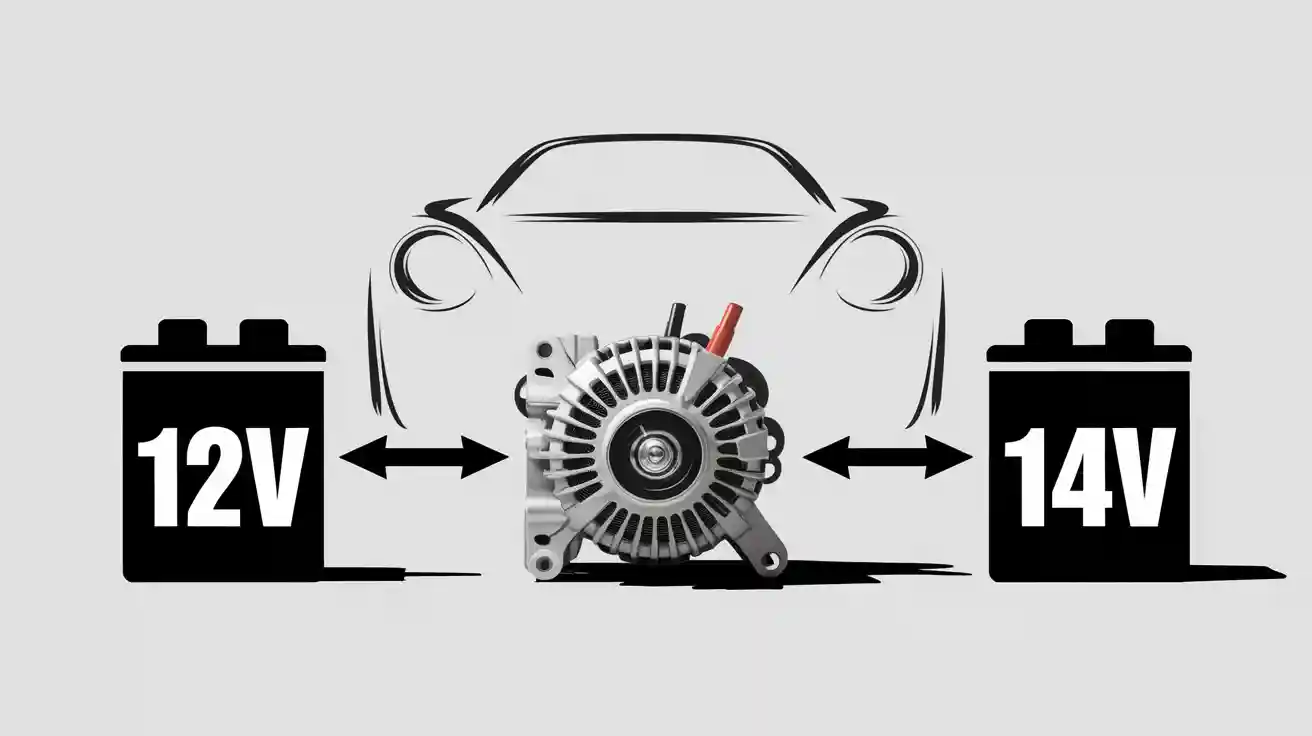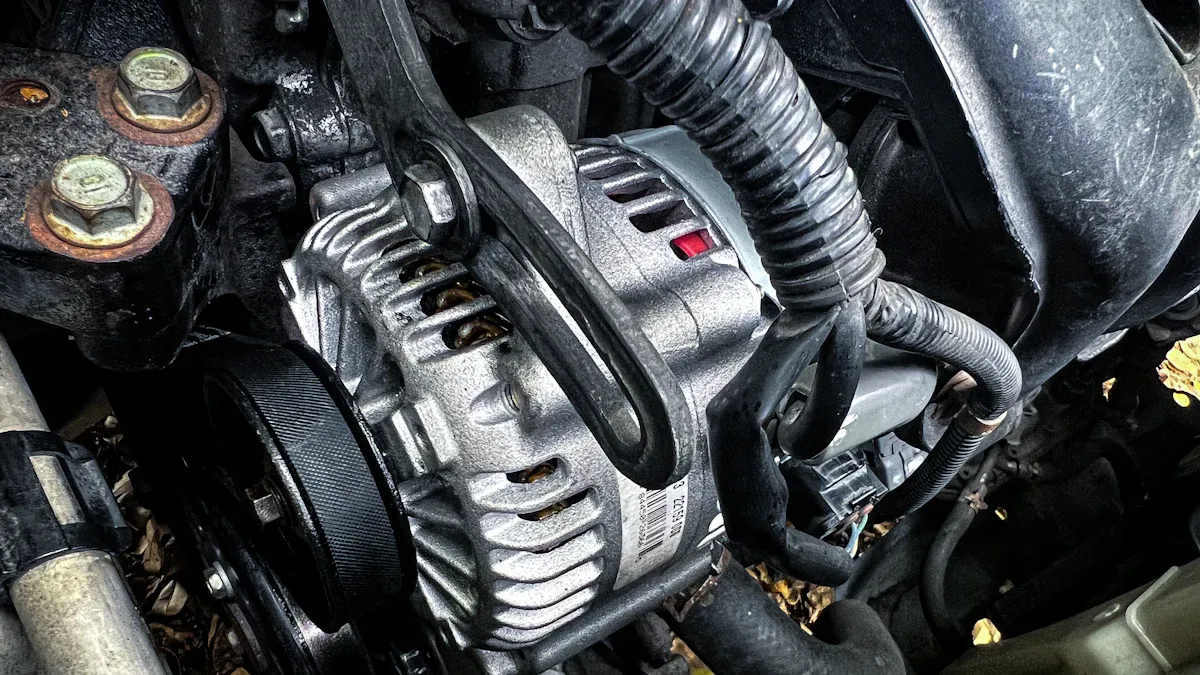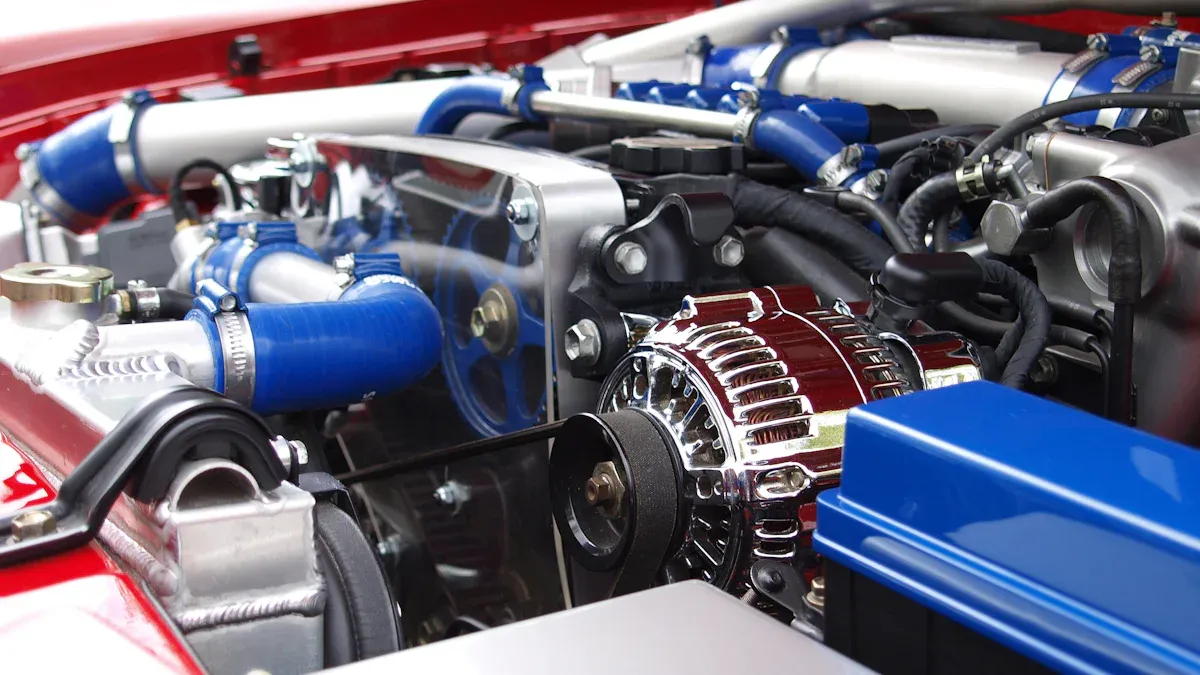
You might see that the big difference between a 12V and 14V alternator is their voltage output when charging a 12V battery. Both types work with 12V systems, but their voltage regulators set the real output. For example, a 12V and 14V alternator can give different charging voltages:
| Regulator Type | Voltage Reading (Volts) |
|---|---|
| 12V Regulator | Up to 15.4 (at first) |
| 12V Regulator | About 14.3 |
This difference is important because it changes how your car or equipment charges and keeps your battery safe.
Key Takeaways
Both 12V and 14V alternators can be used with 12V systems. The voltage regulator sets the real charging voltage to protect your battery. The charging voltage is higher than 12 volts to fill the battery with power. If the voltage is too low or too high, it can damage the battery. The main difference between 12V and 14V alternators is the regulator setting, not the name. Both types can charge your battery well if they are matched right. Pick an alternator based on your vehicle’s power needs and electrical parts. A 14V alternator is good for heavy loads. A 12V alternator works for most cars. Always look at your vehicle manual. Keep your alternator and voltage regulator in good shape. This helps your battery charge well and keeps your electronics safe.
Voltage Basics
Voltage Meaning
Some people think a 12V system always has 12 volts. But the voltage is higher when charging. The "12V" is just the normal or average voltage for a full battery. A lead-acid battery has six cells. Each cell is about 2 volts. When you put them together, you get a 12V battery.
The voltage during charging is more than the normal voltage. Car alternators usually give between 13.5 and 14.4 volts when charging. Sometimes, it can go up to 15.5 volts if there is a big load. This extra voltage helps push power into the battery so it charges all the way.
Here is a table that shows the normal voltage and charging voltage for different batteries:
| Battery Chemistry | Nominal Voltage (per cell) | Open Circuit Voltage (OCV) | Float Charge Voltage | Absorption Charge Voltage (12V system) |
|---|---|---|---|---|
| Lead Acid | 2.00 V | 2.10 V | ~2.25 V | ~14.4 V |
| Nickel-based | 1.20 V | N/A | N/A | N/A |
| Lithium-ion | 3.60 V | N/A | N/A | N/A |
12V and 14V Alternator Differences

Image Source: unsplash
Nominal vs Actual Output
Some people think a 12v or 14v alternator always gives that voltage. This is not right. The numbers "12V" and "14V" are just names for the system. The real voltage changes with engine speed and how much power your car uses.
You can test the real output with a simple check. Use a 1 ohm resistor and measure the voltage across it. This tells you how much current the alternator gives. If you see 10.5 volts, the alternator gives 10.5 amps. Multiply the voltage and current to get the power. This test shows the output can be close to the rated value. But it depends on speed and how much power is needed.
Here is a table that shows the difference between the rated and real output:
| Parameter | Description |
|---|---|
| Rated Output (Nominal) | Set by standards like ISO 8854 and SAE J 56 (e.g., 120A @ 13.5V at 6,000 RPM) |
| Idle Output | Current at low speed (e.g., 50A @ 13.5V) |
| Rating Format | "IL / IR V" (Idle Amps / Rated Amps at Voltage, e.g., 50/120A 13.5V) |
| Actual Output | Changes with speed and demand; alternator gives only what your car needs |
| Measurement Method | Use a resistor to measure voltage and calculate current and power |
| Waveform Consideration | Output is not a perfect sine wave, so measurements are close but not exact |
The ratings for 12v and 14v alternators are just a guide. The real output depends on how you use your car.
Many people think a 12v alternator always gives 12 volts, but this is not true. The regulator makes the alternator give the right voltage for charging. This is usually higher than 12 volts. The same thing happens with a 14v alternator. The main job of both alternators is to keep your battery charged and your car running. The regulator decides how much voltage is needed.
If you compare a 12v and 14v alternator, the difference is often just the regulator setting. Both can work in a 12V system. Both can charge your battery well if the regulator is set right. The real difference comes from how the regulator manages the output, not just the label.
Applications

Typical Uses
You can find 12V and 14V alternators in many vehicles. Most cars, trucks, and motorcycles use a 12V system. This system powers things like headlights and radios. When you drive, the alternator charges the battery. It also runs all the electrical parts.
Some vehicles, like big trucks or special machines, use 14V alternators. These still work with 12V batteries. The higher voltage helps with bigger electrical loads. You might see 14V alternators in vehicles with extra lights or winches. They are also used in boats and RVs. These vehicles often have more devices running at once.
Note: You do not need the alternator label to match your battery. The important thing is that the alternator fits your system’s voltage. It should also meet your power needs.
Compatibility
Your alternator should work well with your vehicle’s system. Both 12V and 14V alternators use a voltage regulator. This regulator checks your battery’s voltage. It changes the alternator's output to keep things safe.
Here are some important points about compatibility:
The alternator makes a 3-phase AC current. This gets changed to DC for your car’s electronics.
The voltage regulator keeps the output close to 14V. This is important for most 12V systems.
Your battery acts like a filter. It smooths out the alternator’s power. It also protects sensitive electronics.
Tests for alternators include checking the rotor and stator. You also measure output and make sure the regulator works.
Never disconnect the battery while the engine is running. This can damage the alternator’s diodes and hurt your system.
Always check your vehicle manual before changing alternators. If you use the right alternator and keep the battery connected, your system will stay safe and work well.
Choosing the Right Alternator
Key Factors
When you pick an alternator, it must fit your car’s needs. First, look at all the electrical parts in your car. Each part, like the headlights or radio, uses power. You should:
Make a list of every electrical part in your car. Write down how much power each one uses.
Think about when you use each part. Some things are always on, but others are only used sometimes.
Add up the power used during normal driving. This total shows how much power your alternator should make.
Pick an alternator that gives at least this much power. If you do this, your car will have enough power for everything. This helps stop problems like weak batteries or lights that flicker.
You also need to think about the weather. Hot or cold days can change how well your alternator works. Make sure the alternator fits your car and works with your battery. Using good parts and following safety rules helps stop electrical problems. The National Highway Traffic Safety Administration says electrical failures can cause car fires. Picking the right alternator keeps your car safe and working well.
Tip: Always check your car's manual for the right alternator size before buying a new one.
Pros and Cons
Both 12V and 14V alternators have good and bad points. Here is a quick look:
| Type | Pros | Cons |
|---|---|---|
| 12V | Common, easy to find, fits most vehicles | May not handle high power demands |
| 14V | Better for heavy loads, charges faster | Can overcharge if not regulated well |
A 12V alternator works for most cars. You can find replacements easily. If you add lots of electronics or drive a big car, a 14V alternator might be better. It gives more power and charges your battery faster. But if the voltage regulator breaks, a 14V alternator could overcharge your battery. Always make sure your car can use the alternator you pick.
Now you understand how 12V and 14V alternators are different. The voltage regulator decides the real output. This means it is important to match the alternator to your system.
Use a 12V alternator for most cars and small trucks.
Pick a 14V alternator if your vehicle uses lots of power or has extra parts.
Always look at your vehicle manual or talk to an expert before changing your alternator. This helps keep your battery and electronics safe.
FAQ
What happens if you use a 14V alternator in a 12V system?
You can use a 14V alternator with a 12V system. The voltage regulator makes sure the output is safe. Always check if your system can handle more charging voltage.
Can a 12V alternator charge a 14V battery?
A 12V alternator cannot fully charge a 14V battery. The charging voltage will not get high enough. You should use an alternator that matches your battery for best results.
How do you know if your alternator is working right?
You can check your alternator with a voltmeter. Start your engine and look at the battery voltage. It should be between 13.5 and 14.5 volts. If it is lower or higher, your alternator may need fixing.
Will a higher voltage alternator damage your electronics?
A good voltage regulator keeps your electronics safe. If the regulator stops working, high voltage can hurt sensitive parts. Always make sure your alternator and regulator work well to protect your system.



